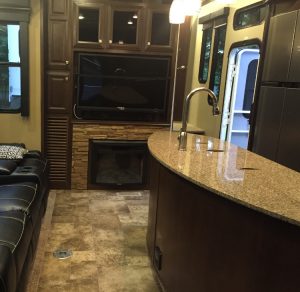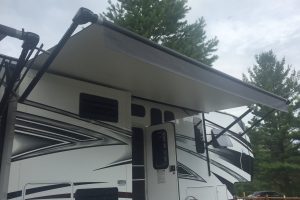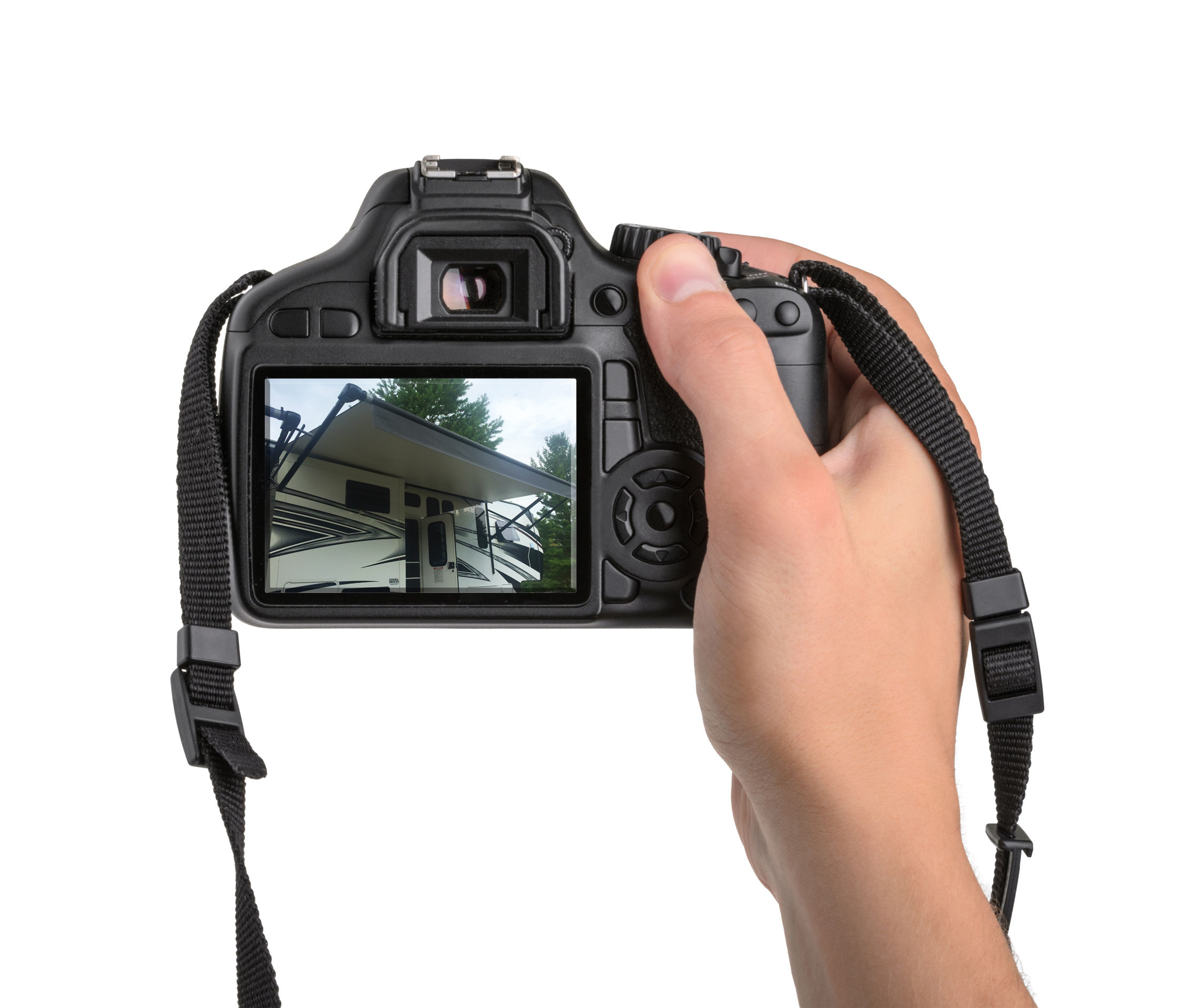An RV is a big investment, so it pays to have the proper insurance coverage. In addition to having your insurance with you at all times during your travels, you should also have up-to-date photos of your RV’s interior and exterior on hand. Here’s why photos are important, as well as some photo taking tips.
- Pictures give you a record of your RV’s appearance and premiums before there’s a problem. As part of being prepared, take photos of your RV to serve as a record to compare to at a future date. Photograph

Photograph your electronics, especially after-market purchases.
slide-outs, interior treatments, awnings, electronic systems, appliances, the engine, and any additional bells and whistles. That way you’ll have a detailed record – just in case something happens down the line. Some quick photo taking tips:
- Take photos during the day when there is plenty of natural sunlight for the best quality. Check your camera’s settings, too, and make adjustments if needed.
- Take photos of your RV when it’s set up for camp as well as when it’s closed up for storage.
- Take distant shots to see the RV in its entirety, from all sides, and detailed shots of attached accessories.
- Pictures help you keep track of upgrades and improvements. Any significant changes or additions you’ve done to your RV could impact the value of the RV in the event you decide to sell. Unfortunately, RVs tend to lose value quickly no matter what you do – whether to a private buyer or a dealer – but everything and anything counts toward increasing the value. Some examples of improvements and premiums to record (take before and after pictures when appropriate):

Be sure to photograph all exterior awnings.
- New appliances
- Tankless water heater
- Solar panels
- Satellite Dish
- Exterior paint
- Awnings
- New flooring
- Bathroom renovations
- Pictures help you when you need to make an insurance claim. Take photos of your RV in the event of damage, such as from an accident with another vehicle, weather-related causes, or a break-in. Take photos of the area surrounding where the damage occurred. This is good to have for your records, as well as helpful for your provider to process the claim. Consider asking and supplying your carrier with photos of your RV for their records prior to their needing to process a claim. Keep them on file digitally as well as hard prints; and always keep them in the same, secure location.
And what about personal possessions? Does your RV insurance cover those if they’re lost or stolen? Most insurance carriers offer additional protection for personal belonging, equipment, and attached accessories. Some insurance carriers automatically cover attached accessories. Always have photos of your high-value items for your records and to have on hand in case you need to provide details to your insurance carrier. This is particularly important if you need to make a report. There may be differences in what kind of insurance is available depending on your use of the RV – full time, seasonal, or renting. If you have a primary permanent homestead, your personal belongings and items that are covered under your homeowner’s policy may not extend to when those items are off premises. Check with your insurance agent.

